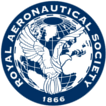RICHARD GARDNER visits Rolls-Royce at Derby to see progress on the new Trent XWB powerplant for the Airbus A350.
This is a full article published in Aerospace International: August 2010With an intake diameter wider than the fuselage of Concorde, the new Rolls-Royce Trent XWB which has begun ground testing at the company’s main UK commercial engine facility, is a very impressive powerplant, from every angle, and looks set to become one of the biggest civil engine programmes over the next three to four decades. For Rolls-Royce, this is perhaps the single most significant member of the Trent family and is taking engine production technology to a new high within a truly global partnership.
Jon Maplestone is commercial officer in R-R’s Risk and Revenue Sharing Group and he outlined some of the efforts that have contributed to the business strategy that has created a new international team, committed to bringing a mature Trent XWB to market within the Airbus programme timescales. The grouping brings together a mix of existing and new relationships and builds on an already very thorough representation of risk and revenue sharing partners, joint venture partners and suppliers, all of whom bring valued experience and a track record of world-class capability and quality. Most have already worked with Rolls-Royce on other Trent engines, including Industria de Turbo Propulsores (ITP), Kawasaki Heavy Industries (KHI), Mitsubishi Heavy Industries (MHI), Volvo Aero, and Hamilton Sundstrand and new partners including Parker Aerospace, Eaton, Esterline, Alliant Techsystems (ATK), Forgital Group, Sumitomo Precision Products (SPP) and Hispano-Suiza (Safran group). ATK is a new partner and, on this first partnership with R-R, is providing the composite rear fan case. This selection follows a capability study which looked at alternative materials and potential partners. The main fan containment case is to be made from titanium and is assembled from forgings supplied by Forgital, whereas ATK has valuable specialist experience in composites manufacturing. Jon said that all partners work with R-R to optimise the investment and returns on the programme, though in general the working relationship on the Trent XWB has resulted in a greater flow of data with the partners than in a more traditional supplier relationship. This is essential in these partnerships when considering, for example, that production forecasts will drive major plant and building investment decisions.
Rolls-Royce defines a risk and revenue sharing partner as one which contributes the following: a supplier, supplying parts to R-R in support of engine build, assembly and aftermarket requirements; a manufacturer, that will turn, forge, cast and machine components, and an investor buying a portion of the programme, expecting a financial return. In addition a partner may also be a designer, designing components and building packages and modules within the overall design. As an integrator, the partner would be responsible for taking full control of the sub-tier supply chain, integrating and assembling parts, sub-systems and even modules. Jon explained: “We are looking to leverage global engineering talent and excellence and our partners will already have an established capability with an appropriate industrial footprint. There is a great incentive for the supply chain to work with us providing additional capacity and enhancing proven technology from all sectors, including, for example, space, materials and defence. This partnership approach is at the heart of the Trent XWB.”
He added: “On the earlier Trents we had more limited partnerships but today some partners are supplying integrated modules and, while they are sharing in the investment and risk, they are also entitled to a share in the programme revenues including long-term after-market returns. Up front investment in R&D is rewarded with shared revenues throughout the engine life-cycle.”
For the partners, the team benefits include developing a clear route towards an enhanced market position, a long-term commitment to sustainability and greater potential for improved returns linked to capability and performance in a global programme. Access, exposure and insight can expand the opportunity for some suppliers to step up to become major sub-system suppliers and to grow their own capabilities in terms of design and engineering, and possibly also integration. On the Trent XWB, the industrial partnership represents the largest ever sharing on any Trent programme — over 40%. Twelve key partners, 88 suppliers and 16 Rolls-Royce plants are fully engaged working to production targets for the first hardware items. This is a major company step towards engaging and harnessing the highest available global talent and technologies.
Success story
Providing an update briefing on the Trent XWB test programme was Chris Cholerton, programme director. He pointed out that this engine programme was already a massive sales success as over 1,000 engines had been ordered for the 530 Airbus A350XWBs under contract. The Rolls-Royce Trent XWB is currently the sole engine supplier for the A350 market and, thanks to an enormous R&D effort, the engine will be de-risked and certified well in advance of the first aircraft taking to the air in 2012. In fact it has only taken four years to go from idea stage to today’s reality, which is quite remarkable in view of its very advanced technological specification. Engine concept definition started in 2006 and following two years of design integration with Airbus, the configuration was frozen in 2008. Less than two years on, the first engine is now running on a test bed in Derby and will start flight tests next year fitted to one of the Airbus A380 development aircraft, followed by 12 months of A350 flight test. The engine entry into service for the -900 series aircraft is due in mid 2013, with the -800 in mid 2014 and the -1000 model at the end of 2015.
Roll-Royce's engine test rigs allow powerplants to be run up to max power in a fully soundproofed building. (Rolls-Royce)
The design of the Trent XWB is almost complete and, by early next year, seven engines will have been built. The first engine run was completed on 17 June this year with risk reduction being conducted from a variety of test rigs, in the UK and abroad. These tests range from impact and materials tests on the fan system, to materials and aerodynamic tests on the combustion and turbine stages, seals and bearing tests on the transmission systems, materials, vibration and aerodynamic tests on the compressors, and control system tests. By carrying out the critical tests early, with a rapid build-up of test engines, the risk reduction can be completed early, avoiding programme delays and costly design changes later. Investment in upgraded or new test facilities, in addition to the main No 57 and 58 Test beds in Derby, include an external ice-test rig in Glacier, Manitoba, an outdoor test facility at Stennis in the USA, a new mechanical test facility and experimental logistics centre.
At Derby a massive test building, completed in 2006, contains ample space for complete engines with build stands for many engines at once. Some engines can undertake 2,500 measurements with ‘plug and play’ facilities to speed up the instrumentation rigging attached to the engines under test. Three test beds will be in operation around the clock, with a test team totalling 130 people. Data is monitored using the latest digital equipment to ensure the engine and its components match the predicted performance. The design of the engine test rigs can accommodate engines with thrust levels up to 150,000lb. Sitting within a giant insulated box, Test Cell 58 can allow an engine to run at high thrust, yet without any external noise escaping. One engine will be tested to destruction during the blade off test, which can be extremely dramatic to watch in slow motion, as the whole engine twists and bulges while absorbing the energy and containing the damage within its casing and expelling the debris to the rear. Other tests, such as large bird ingestion, can also cause some damage though to a far lesser degree, the engine having to continue to run on and produce power as part of the certification requirement.
Advance orders
The Trent XWB for the Airbus A350 XWB (above) has become Rolls-Royce's fastest selling large jet engine . (Airbus)
The engine design incorporates the latest technological advances, making this the most economical and environmentally friendly product within a Trent family that is already famed for its fuel economy, reliability, low emissions and quiet operation. It has a new fan case mount system and optimised bearing load management system, advanced aerodynamic compressors, a single skin combustion casing, a modulating air system, two-stage IP turbine, a short light LP turbine and a 118inch fan with low hub tip ratio fan. Chris Cholerton underlined the importance of de-risking the new engine well ahead of the first A350 appearing: “There are already orders for over 1,000 engines and this is three years before the entry into service of the first aircraft. With the Trent 700 (the most successful engine in the A330 market) it took us 14 years after entering service to reach this sales figure.” He said: “We will be accumulating test cycles earlier than usual ahead of flight tests. We put in more design hours earlier, carried out more analysis earlier and have put more test engines into the programme earlier. Resources have included a higher proportion of manufacturing engineers to help ensure design for manufacture and achieve production readiness earlier. Importantly, the design has also focused on maintainability and reliability, with deep analysis of lessons learned from previous Trent models to design out potential problems even before we test.” He said the programme aimed to offer customers real added value on this engine: “With 60m hours of Trent operations behind us by 2013 we are confident that this engine will set new standards of service maturity.” Rolls-Royce large engines in service have seen a 10-12% reduction in disruption events year on year. Combining technical improvements with lessons learnt is leading to the XWB being on-track to offer an all-time reliability performance on entry into service.
Aerospace International Contents - August 2010
- Aerospace News 4
- News focus 11
- JF-17 -dawn of a new era 12
- Pakistan’s new fighter aircraft- Dream weavers 16
- Alenia’s revoluntionary 787 facility- Full thrust ahead 18
- Rolls-Royce’s new XWB engine- Sounds like a cracking idea 21
- Early airborne warning for fatigue- In the heat of Berlin 22
- Report on ILA air show- Flying at the double 26
- Inside the A400M flight test programme- Sim show 28
- Report on ITEC show- The joy of microlights 30
- Microlight training school- Visitors from inner space 32
- Report on Aircraft Interiors show- The last word 34
- Keith Hayward on European collaboration
Final adjustments
With a parallel certification and maturity focus any changes to design will be made over the next year allowing minor redesign prior to first flight in mid 2012. To date, SFC, noise and emissions, weight and service attributes are all on target. The current status of the programme is consistent with the guaranteed position on the A350-XWB. Emissions status is validated by the latest Phase 5 combustor testing and rig testing. Noise status is validated by the latest engine noise measurement and low noise bleed valve programme is progressing for approach noise. Chief engineer Chris Young described the advanced state of production readiness that was already well in hand through a most rigorous planning regime: “We need to be flawless in entry into service,” he said. “This engine is already hugely successful in the market and by eliminating the prospect of major changes later, we can ramp up the production rate quicker. By shaping the programme earlier we can react quicker.” The supply chain has gated reviews and risk management, with detailed plans for ensuring the supply chain capability and capacity was suitable. This, in many cases, has included building new manufacturing as well as test facilities. A new single crystal turbine blade facility and advanced disc manufacturing facility are being built in Singapore and there is a gated process to transition from development build to the final production assembly facility via a physical pre-production facility. At Derby a new production-build concept will utilise a moving line fan case assembly, a moving line core assembly and lean principles. This concept will be proven before the Trent XWB enters production. The production flow of Trent engines from Derby is scheduled to double as XWB production builds to about 300 a year or around one engine a day with more production and assembly capacity available in a new facility in Singapore.
Chris Young said that the design of the Trent XWB incorporated advances that will really make a difference for reliable operations over a very long lifespan in service. A bigger fan blade and fan flow will give lower fuel consumption. There are very large loads to manage but the revised bearing load management design will reduce fuel consumption. Advanced 3D design of aerofoils and annulus lines will manage the transition between the compressor stages. Incorporating lessons from many years of research within the company, an optimal balance between fuel burn and NOx will be achieved with minimum trade-off penalties. The chosen aerodynamic design results in a relatively short and lightweight engine. Versions start with 75,000lb and rise to 79,000lb thrust (with a 79k bump rating offering improved hot and high performance for difficult airports), 84,000lb is available for the datum -900 aircraft, with the highest thrust option being 93,000lb. On this variant the fan rotates faster and this requires a strengthened fan system, while the capability of the core is modified so that the IP and HP turbine blades can offer long life at higher temperatures, including features such as advanced thermal barrier coatings. A demonstrator engine running in the company’s Stuttgart facility in Germany is one of the demonstrator vehicles helping to prove new technologies. The target for in-flight turn-backs and take-off failures is zero.
All the early work and investment is helping give Rolls-Royce confidence in the Trent XWB. According to Chris Young: “We’re feeling good about this programme.”
This is a full article published in Aerospace International: August 2010. As a member, you recieve two new Royal Aeronautical Society publications each month - find out more about membership.







